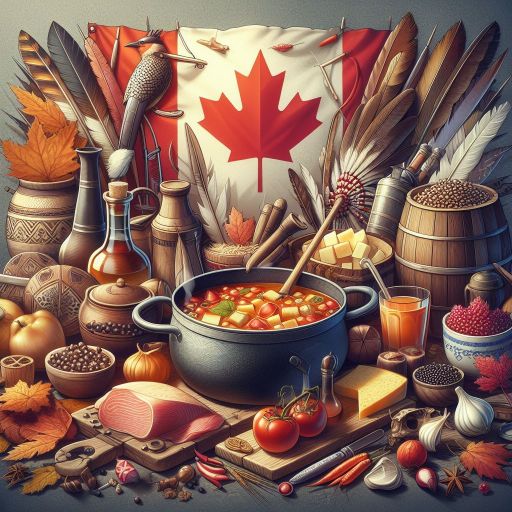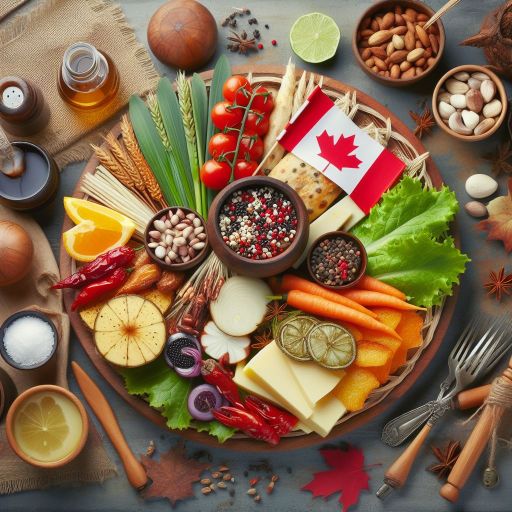How to Get Free Diamonds in Hay Day?
PUBG Mobile‘s 3rd Anniversary: Another New Gangster Game from Yotta
How to Get Free Gems in Dragon City?
Launched 3 years ago, "Pokemon Go" is still going strong!
Free Fire: Becoming the Hottest Tactical Competition Game in the US After Its Success in Southeast Asia and Latin America
The Games Fund Launched a $50 Million Early Investment Fund to Invest in American and European Companies
From the famous Quebecois poutine to a delicious tourtière, Canadian food often focuses on the quality and local sourcing of ingredients. Today, modern Canadian cuisine is still developing.
It blends multicultural influences with innovations in cuisine without forgetting about sustainability and the abundance of nature. This diversity has been further enriched by subsequent waves of immigration in later centuries.
Canadian cooking incorporates different dishes because it has been contributed to by aboriginals, settlers, and immigrants from various backgrounds.
Indigenous influences remain prevalent in Canada’s contemporary food scene, alongside those of the three major immigrant groups of the 17th and 18th centuries, namely the English, the Scottish, and the French.
These have been increasingly added to over time as more immigrants came into Canada after that period.
Canadian Cuisine Has a French Origin
There are a few truly unique dishes that Canada can call its own. Almost all of them come from Quebec, which is the major French-speaking province in the country. As anticipated, these dishes borrow heavily from French cuisine and also have First Nation traits.
Many of Canada’s early French settlers were fur traders, and Quebecois cuisine is characterized by hearty, high-fat foods designed to keep these settlers warm and satiated during Canada’s long, harsh winters.
Poutine is a dish with cheese curds and gravy that demonstrates what makes Quebec’s cuisine so flavorful as well as filling. Another traditional dish is tourtière, a meat pie with a flaky crust filled with pork, fowl, veal, or beef.
This recipe is especially popular during the Christmas and New Year's holidays. Almost every family in Quebec has its own unique blend of spices to season it. Pâté chinois resembles Shepherd’s Pie and consists of layers of beef, creamed corn, and mashed potatoes.
In the dessert section, there is tarte au sucre (sugar pie), which is just one single-crust pie made out of brown sugar, flour, eggs, cream, and vanilla. Another favorite desert would be pounding chômeur (poor man’s pudding cake), consisting of white cake batter layered with hot syrup or caramelized sauce.

Canadian Cuisine Is Big on Meat And Seafood
As one looks at restaurants that describe their cuisine as Canadian, one will generally find the menu placing emphasis on meats and seafood.
These dishes can be prepared easily in different ways and served, which is indicative of a culinary tradition dating back to Canada’s First Nations people and the earliest settlers.
When it comes to meat, gamer meat, including venison, aribou, rabbit, boar, and bison, is especially popular in Northern Canada. Alberta has one of the largest cattle herds in North America, which makes it famous for juicy AAA-grade beef.
As for sea food, the Pacific salmon found here is globally renowned for its quality, with certain First Nations communities being symbolized by the Coho species.
Wild spot prawns with their firm texture and sweet flavor also come from British Columbia, while Nova Scotia has some of the best lobsters on the planet.
Prince Edward Island has many cultured mussels that are grown inside mesh stockings hung in water to give them a softer taste or texture.
The Diverse Canadian Cuisine
It is not easy to define Canadian cuisine since it is multicultural. Canada, as a nation of immigrants, has fundamentally transformed its culinary traditions into a jumble of different foods from all over the world.
The blending of these diverse cultures is present. in some uniquely Canadian versions of international dishes.
A classic example is Nova Scotia’s donair, which draws inspiration from Turkey’s doner kebab. Usually, it consists of spiced ground meat with sweet sauce, garlic powder, uncooked onions, and fresh tomatoes, all wrapped in flat bread. Another distinct one is sushi pizza.
This includes a fried rice cake topped with raw fish, roe, or spicy mayo. There is also East India’s roti, an alternative to West Indian stuffed roti made from South Asian bread that has different curries for the filling.

Some Iconic Canadian Dishes
The diverse culinary heritage of Canada has led to the creation of a variety of iconic dishes. The origin of many of these dishes is in specific regions. However, they can now be found throughout the country.
Poutine (Quebec): Poutine is a favorite dish consisting of French fries covered with gravy and cheese curds.
Originating in Quebec in the 1950s, one popular storyline has it beginning when a patron at Café Ideal requested cheese curds on his fries, leading the owner to exclaim, “ça va te faire une maudite poutine!” (that will make a damned mess!).
Later, gravy was added so that the fries would stay warm longer. At present, there are various forms of poutine with toppings such as lobster in the Maritimes, slices of Alberta beef, or even butter chicken in BC.
Tourtière (Québec): This double-crusted meat pie is usually made with pork, veal, and beef, or just pork if it’s from Montreal, and has been a traditional part of the Québécois Christmas feast (réveillon) since the 1600s.
According to the Great Canadian Cookbook, real tourtière contains four spices: cinnamon, clove, allspice, and nutmeg. There are different versions with diverse fillings, some of which may contain fish.
Butter Tarts (Ontario): These are a traditional treat that is made with butter, sugar, syrup, vanilla and eggs in a crumbly pastry crust.
However, the butter tarts of today often times include numerous versions consisting raisins or pecans being the most notable among them.
Nanaimo Bars (British Columbia) – These can be described as sweet bars which are made up of a mixture of crushed wafers at the bottom, custard-flavored center and chocolate topping.

Started becoming popular since 1950s this bar has its roots from Nanaimo’s coal mining era late in the 1900s when coal miners’ families from England used to send these baked sweets for their loved ones during lunch time while they were busy down there digging coal.
For miners throughout the day it was a very healthy meal.
Conclusion
Canadian cooking is influenced by various factors such as the various immigrants who migrated to Canada, its aboriginals, and the French and English.
Poutine from Quebec, tourtière from Quebec, butter tarts in Ontario and Nanaimo bars in BC all showcase Canada’s culinary variety in terms of regional tastes and creativity.